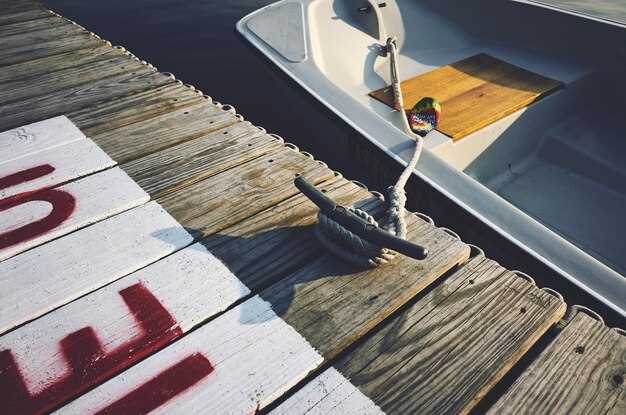Restoring a neglected boat – where to start

Restoring a neglected boat can be a rewarding yet challenging endeavor for beginners. The process involves various steps that require patience, dedication, and a willingness to learn. One of the first areas to focus on is the hull, which is the boat’s foundation and requires special attention to ensure safety and performance on the water.
As you embark on the journey of restoration, it’s essential to understand the importance of proper care for the materials and surfaces involved. The condition of the hull can significantly affect the boat’s longevity and functionality. Regular maintenance and inspections can prevent minor issues from becoming significant problems, thereby enhancing the overall experience of boating.
In this guide, we will outline essential steps that will help you restore your boat effectively. From assessing the condition of the hull to implementing necessary repairs and maintenance techniques, you will gain valuable insights to bring your vessel back to life. With the right approach and care, you can transform a forgotten boat into your ultimate aquatic adventure companion.
Assessing the Condition of the Hull and Identifying Repair Needs
When undertaking the restoration of a neglected boat, the first step is to thoroughly assess the condition of the hull. The hull is the primary structure of the boat and plays a crucial role in its performance and safety. Start by inspecting the exterior surfaces for any visible damage, such as cracks, chips, or blisters that could indicate deterioration.
Next, check for signs of osmosis. This often appears as raised areas or blisters on the hull, particularly in fiberglass boats. If detected, these spots may require immediate attention; otherwise, they can lead to more severe structural issues over time.
Conduct a detailed inspection of the interior of the hull as well. Look for any signs of water intrusion, such as discoloration or mold. Ensure that the bulkheads and transom are also free of rot or degradation, as these components provide essential support to the hull’s integrity.
It is essential to assess the condition of the keel and any appendages attached to the hull, such as rudders and fins. Look for cracks or corrosion that could weaken these critical components and compromise the boat’s stability in the water.
After completing the visual inspection, it may be beneficial to perform a tap test on the hull using a hammer or mallet. This technique can help identify areas of delamination or voids beneath the fiberglass surface, revealing hidden repair needs.
Once all observations are documented, prioritize the repairs based on the severity of the damage. Addressing the most critical issues first ensures structural integrity and longevity of the boat during its restoration journey. Regular care and maintenance will help prevent future problems and extend the life of the hull.
Cleaning and Preparing the Hull for Restoration

Cleaning the hull is a crucial first step in the restoration of a neglected boat. Begin by thoroughly rinsing the hull with fresh water to remove loose dirt and debris. It’s essential to inspect for any damage or wear that may require attention. Look for cracks, blisters, or signs of osmosis. Address these issues before moving forward with the restoration process.
After inspection, use a gentle biodegradable soap and a soft scrub brush to clean the surface. Avoid harsh chemicals that could damage the hull. Pay special attention to stains, algae, or barnacles; these can be removed with a marine-grade cleaner specifically designed for boats. Be sure to follow the manufacturer’s instructions for best results.
Once the hull is clean, rinse it thoroughly to remove any soap residue. Allow the boat to dry completely before proceeding with further restoration steps. This drying process is vital as it prevents trapped moisture from affecting paints or sealants that will be applied later.
If the hull has any old paint, it may need to be stripped off. Use a marine-grade paint stripper, following the guidelines for safe application. Afterward, sand the hull lightly to create a smooth surface for new paint, if necessary. Ensure that the area is well-ventilated and that you’re using protective gear.
Finally, after cleaning and sanding, inspect the hull once more for any missed repairs. This complete care ensures that when you begin the restoration process, you have a solid foundation for applying new finishes and making the boat seaworthy again. Taking these steps seriously will significantly contribute to a successful restoration journey.
Applying Finishing Touches: Paint and Protective Coatings

After completing the restoration of your neglected boat, applying the right paint and protective coatings is essential for maintaining its hull and enhancing its appearance. Here are the key steps to ensure your boat receives the best care:
- Choose the Right Paint:
Select a marine-grade paint specifically designed for boats. These paints are formulated to withstand harsh marine environments. Common types include:
- Two-part polyurethane paint
- Linear polyurethane paint
- Epoxy-based paints
- Preparation:
Proper preparation of the hull is crucial. Follow these steps:
- Clean the surface thoroughly to remove dirt, oils, and old paint.
- Sand the hull to create a rough texture for better paint adhesion.
- Repair any cracks or damages to the hull before painting.
- Application Techniques:
How you apply the paint can impact the final result:
- Use a paint sprayer or roller for an even coat.
- Apply multiple thin layers rather than one thick layer.
- Allow adequate drying time between coats as per manufacturer instructions.
- Protective Coatings:
After painting, it’s vital to apply a protective coating:
- Consider a clear gel coat to protect the paint.
- Use anti-fouling paint on the bottom of the hull to prevent marine growth.
- Apply a UV protective layer to shield against sun damage.
- Regular Maintenance:
To ensure longevity, regularly inspect and maintain the hull:
- Wash the boat frequently to remove salt and dirt.
- Reapply protective coatings as needed, based on wear and exposure.
- Store the boat in a covered area to minimize UV exposure when not in use.
By following these steps, you can effectively paint and protect your boat’s hull, ensuring it stays in excellent condition for years to come. Proper care will not only enhance its visual appeal but also prolong its lifespan on the water.




